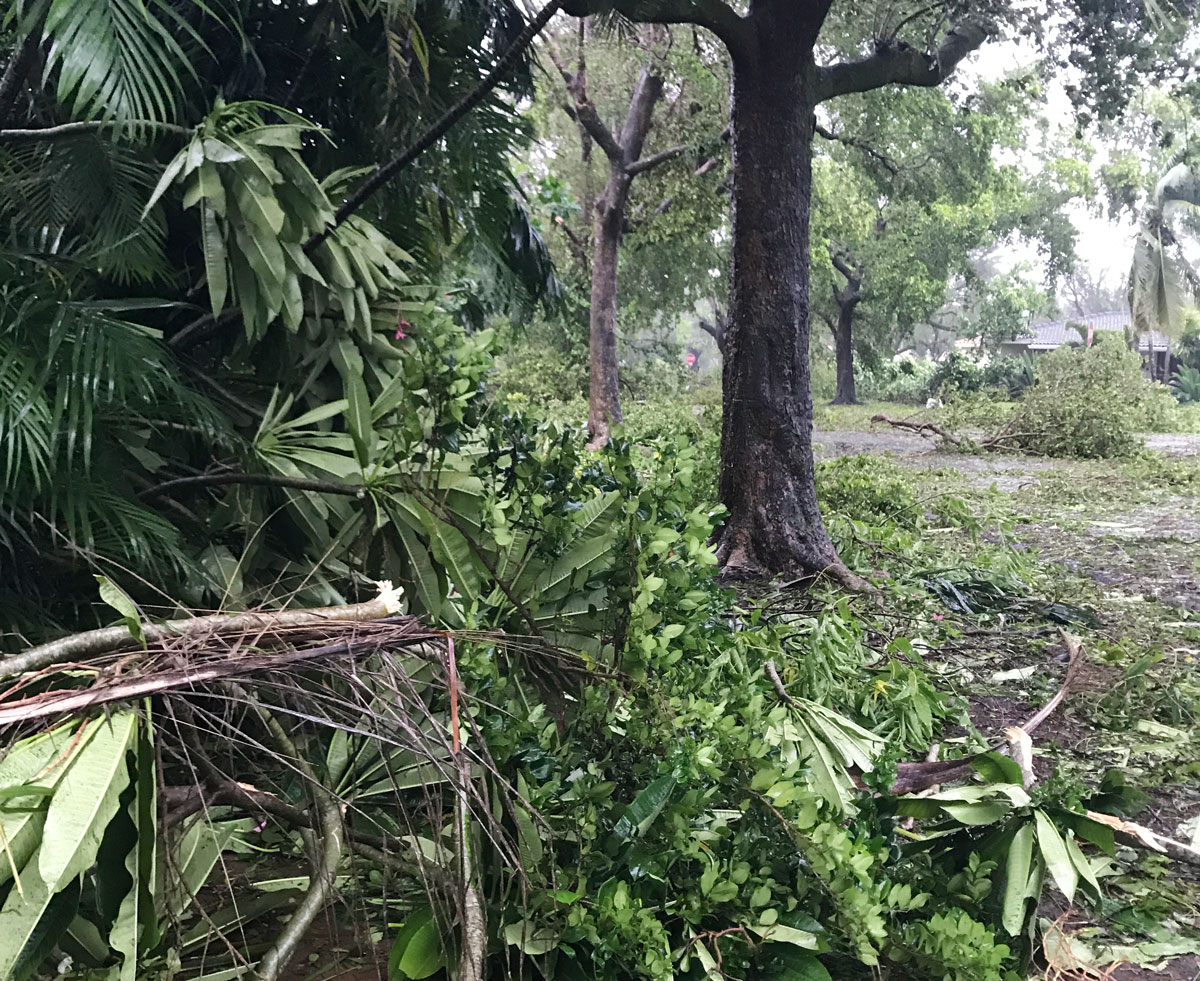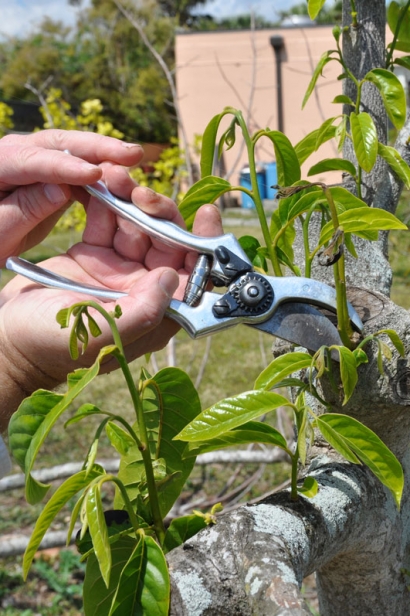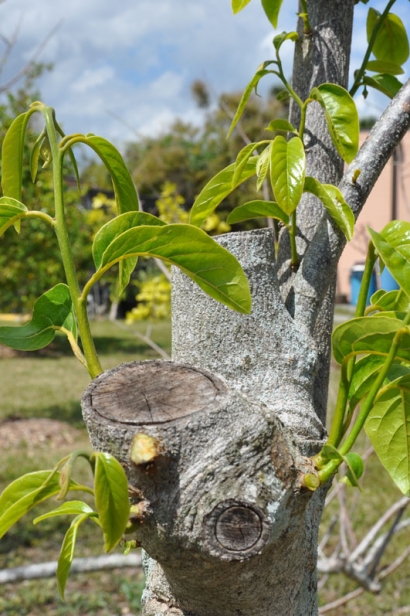Lessons Learned from Hurricane Irma
It was much easier to learn new things once I could accept that I did not know it all. A lack of knowledge was just a form of failure, and failure is simply a chance to learn and do better next time. No one fails better than me! Irma was a perfect chance for me, and many tropical fruit growers, to learn from mistakes. Hurricane season begins June 1, so let’s look at what we did right and what we did wrong last year.
Lessons Learned
Don’t let trees get too tall. Timely pruning keeps fruit trees closer to the ground, and easier to pick. Selective pruning can keep trees more open and less likely to fall.
A good root system helps keep your tree upright in a storm. Weak roots equal weak trees. Weak trees fall down go boom in tropical storms. They don’t need a Category 5 storm to fail. Start with young, good quality trees and plant them correctly. Dig a hole just larger than your container – too high is better than too low. A tree planted too deep will slowly decline over time. If you hit limestone, slide the hole to the side and find a better spot. Beware of circling roots and make sure to protect your trees from mechanical damage – from string trimmers, for example – once they are planted.
How to Follow Up on the Trees You Saved
If you reset trees after the storm, remember that their root systems are not what they used to be. They will need extra water during our dry, hot spring. Water accordingly.
Trees that were cut back or had their limbs broken will now be flushing out with a lot of new growth. Too new many branches in one spot will cause problems later [1], so take time now to select out the best branches in each location and remove small, weak, or misshapen new growth [2].
Take time now to adjust strapping or bracing that’s holding the tree up. If you leave the strapping in the same place for too long, it will damage the tree’s trunk.
If a fruit tree is sending out new growth from near the bottom of the tree, or a cut stump that was left in place, it may not be what you think it is. Don’t forget that many of our favorite fruit trees, like mamey, sapodilla, mango, carambola and avocado, are grafted. This means that the top and bottom of the tree are different. The top is the cultivar or variety that you love (think ‘Carrie’ mango) and the bottom is a strong version of a mango that grows well in our soil (usually ‘Turpentine’). What is coming up from the base of your damaged tree may not be what you want it to be. It could taste and look completely different from what you liked about your tree in the past.
Click here for more information on caring for tropical fruit trees.
Questions about your tropical fruit trees? Call a UF/IFAS extension agent at 305-248-3311. Homeowners: Adrian Hunsberger (ext. 236); commercial tropical fruit growers: Jeff Wasielewski (ext. 227); commercial vegetable growers: Qingren Wang (ext. 234).








